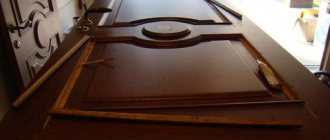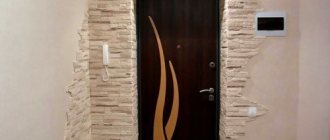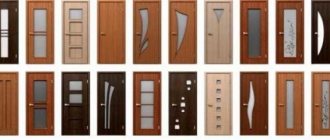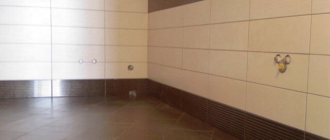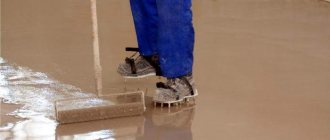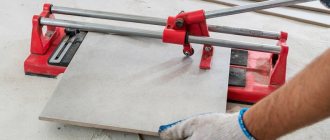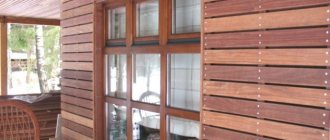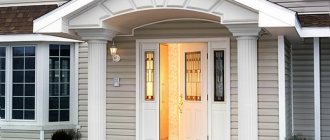Entrance doors
Have you purchased a new door or are you tired of finishing the old one? An excellent solution could be to upholster the door leaf with your own hands using a substitute for genuine leather. Today, the construction market offers many options for upholstery material made of artificial leather for wooden doors. We will learn in this article about what to pay attention to when choosing a suitable material and how to upholster doors with leatherette with your own hands. By the way, the correct spelling of the word is DERMATIN, not DERMANTIN.
Leatherette covering options
Door upholstery
The correct choice of upholstery material allows you to get a completely new look for the door. Finishing can be done not only to repair old door panels, but also to create new designs for wooden and iron structures. Excellent quality upholstery allows you to:
- Change the appearance of products by color, texture and shape.
- Carry out volumetric design. You can create a real masterpiece from simple or old doors.
Insulation is a material with low thermal conductivity. It is used as insulation and also has excellent sound-absorbing qualities. Doors made of iron and wood without padding may shake when closing, which makes some people nervous.
Sheathing allows you to get rid of such manifestations. Multilayer options for sound insulation, thermal insulation and finishing provide the greatest effect.
What kind of fabric
Many people, speaking about this material, wonder which is correct: dermantin or leatherette? Here the answer is clear: the second option. Although leatherette has many synonyms: nitro artificial leather, vinyl artificial leather, granitol, artificial leather.
The most common use of this unique material is as upholstery, not only for doors, but also for furniture, cars, etc. The material feels smooth to the touch, truly reminiscent of leather. Well, in order to better understand what leatherette is and how it appeared, let’s look into history.
A little historical background
The name "leatherette" comes from the Greek language. Translated into Russian, the word dermatinos means “leather” and fully corresponds to the appearance of the material. A similar term is found in Latin: derma, or “skin.” The fabric is indeed dense, with a characteristic surface very similar to its natural counterpart. Knowing the origin of the word, now you definitely won’t be mistaken about how to write it correctly: dermatin or dermantin.
Today, the history of the origin of granitol, which is what dermatin used to be called, is unfortunately lost. Where and when he first appeared, no one will answer. However, there is one legend associated with this textile. When people needed to invent artificial leather, because natural leather had become very expensive and could not meet human needs in the required quantity, nothing worked for a long time. The materials did not meet the requirements, looked ugly and were not practical. And then one day, completely by accident, granitol turned out: a paper-based fabric with a special impregnation that creates the necessary texture. And although the names and places of residence of the inventors are not known, they say they received a worthy reward. So worthy that they remained wealthy for the rest of their lives.
Although, there is another, more accurate version: matter was invented by Soviet scientists around the 30s of the last century. For what? All for the same reason: a finishing material was needed that did not differ in appearance from leather. But the fact is that before this time there already existed fabrics that imitated the named natural material. Therefore, it is not entirely correct to say that it was then that leatherette was created.
Now that you know the meaning of the word “leatherette” and the history associated with the origin of the material, it’s time to talk about its composition and method of production.
Lining components
Canvases can be made using different technologies. Durable door overlays are made from MDF, plywood and veneer. There are plastic options - various films, vinyl.
The peculiarity of each type is the creation of a unique design.
Soft linings are considered very flexible and dense materials, which guarantee not only thermal insulation and sound insulation. The upholstery of wooden doors differs from the design of iron ones. The material is not attached to all bases using special self-tapping screws. The glue has the highest adhesion and helps hold the parts together.
It is recommended to carefully study the installation technology and draw up a plan before starting to create a door design.
Features of materials
Synthetic leather is a base coated with nitrocellulose. This material has maintained its popularity due to its relatively high resistance to ultraviolet radiation. Color finishes may vary. It is resistant to chemical influences and protects the fabric when exposed to high temperatures.
Faux vinyl leather is a current material that is competitive in quality and cost. It looks no worse than expensive upholstery. It is made from polyvinyl chloride, which is resistant to various influences. It is not advisable for vinyl flooring to be exposed to sunlight for long periods of time.
Leatherette made using old technology is practically unavailable in stores today, so substitutes are used that look very similar, but differ in the chemical composition of the polymer. This is reflected in the cost and technical properties of the material. Features of substitutes:
- the surface can be glossy, matte, smooth, of various textures, including porous;
- the material can imitate all types of animal and reptile skins;
- The leatherette base is resistant to damage.
General description of new leatherette fabrics
The classic definition of leatherette says that it is a rolled material based on woven fabric made from cotton thread, on the surface of which a layer of colored nitrocellulose is applied. Material manufacturers took into account previous shortcomings and decided to replace the woven base with a porous polyvinyl chloride film.
The surface began to be covered with polyester, polyurethane or a mixture of leather fibers and latex crumbs. In the first two cases, the new dermantins were called eco-leather, and in the last version, using a mixture, they were called recycled leather.
As a result, practically new materials were obtained, which differ:
- elasticity;
- wear resistance;
- breathability;
- strength;
- affordable price.
Tactile sensations make it practically impossible to distinguish synthetic materials from well-crafted natural leather. But the main aesthetic advantage of the new leatherettes is the ability to be painted in any color and create a beautiful surface texture. The price of the canvas depends on the components and ranges from 500 to 1500 rubles/m2.
Leatherette in design
The material is often used in interiors, does not wrinkle, does not fade and looks presentable. Its advantages:
- Stability. Dermantin is able to retain its qualities for 7-10 years.
- Easy to clean. You can use water for this.
- Moisture resistance. The material is airtight. This reduces the risk of damage to the insulation and waterproofing of the system.
- Frost resistance. Leatherette has protective technical properties and is resistant to deformation at low temperatures.
- Variety of colors. The material is available for sale in a wide range.
- Antiseptic qualities. The leather substitute does not rot, does not become moldy, and insects cannot live in it.
- The material is resistant to chemicals, so it can be washed with various means.
- Reasonable price.
With the help of wooden and iron door systems, another serious problem was solved: heat and noise insulation of the building. If you cover the canvas with dermantin, the drapery slows down heat loss and prevents cold air from entering the building. This professional material has much fewer disadvantages:
- Flammability. The upholstery may burn in a fire.
- Cuts on the material made during repair work cannot be hidden by anything, as a result of which they spoil the appearance of the door. One of the best solutions is to completely replace its surface.
Pros and cons of dermantine
The consumer properties of new rolled materials for covering entrance doors and other household purposes are even superior to natural leather in a number of indicators. Among them, experts include:
- affordability for most consumers;
- resistance to moisture, microorganisms and decay;
- very high tensile and tensile strength;
- wear resistance and durability;
- operation in the temperature range from -40°C to +60°C;
- service life - at least 20 years;
- high heat and sound insulation qualities;
- immunity to solar ultraviolet radiation;
- a wide variety of textures with a wide range of colors;
- easy maintenance and the ability to use chemically active detergents.
There are only two disadvantages, but they are quite significant:
- impossibility of repair in case of mechanical damage or cuts - a complete re-upholstery of the entire covering will be required;
- All types of new dermantins are capable of maintaining fire and belong to the G2 flammability group.
These disadvantages are not critical and, given the large number of advantages, can be considered insignificant.
Door mounting
A typical upholstery kit consists of leatherette, insulation and nails. Artificial leather should have increased density and elasticity. It is worth paying attention to the smell: if it is strong, it means there are violations in production. Such material can evaporate harmful substances and is therefore not suitable for interior decoration.
Insulation (isolon, batting, foam) has a low density, resulting in a unique relief that can provide heat and sound insulation.
Before beating, you need to take the following tools and materials:
- screwdriver;
- hammer;
- knife and scissors;
- glue brush;
- roulette;
- stapler;
- artificial leather;
- facing material;
- decorative shell (ideally combined with upholstery on a square canvas).
In addition to the listed materials, in order to tighten the canvas, special nails are needed. They must be selected according to the upholstery. The nail caps look presentable and have different finishes.
Briefly about the main thing
The entrance door can be updated quickly and cost-savingly if you cover it with leatherette. The procedure is suitable for updating doors to an apartment, private house or cottage; it does not require special skills or professional tools.
In order for the upholstery to last as long as possible, during the execution process it is necessary to adhere to technology that takes into account the type of fabric (wooden or metal). Manufacturing includes surface preparation, upholstery with insulation and leatherette, and at the end - decoration (if provided).
Question
Write in the comments what you think - is it worth using polystyrene foam for thermal insulation under leatherette?
Finishing work
You can order a cheap option for door upholstery from specialists or do the work yourself. The work guide includes a number of steps.
Work order:
- The canvas is removed and placed on a stand.
- Decorative, iron components and outdated coating are removed. Small irregularities that may appear during cleaning will be hidden by thermal insulation.
- The surface must be cleaned with an antiseptic before covering the door.
Decoration options
In any case, the canvas is decorated on the surface of the dermantine and the choice of decorating elements is very large. This can be wire, cord or decorative nails.
Before you start decorating, you need to make markings, driving small nails into 1/3 of the points. A wire or cord is pulled over them, and only then are the nails driven in completely. By tensioning the wire or cord, a relief pattern is created.
Thermal insulator location
Insulation is necessary for insulation and noise blocking. Before installing it, you need to think about the direction of the door opening. If it opens outwards, the bolsters will be visible. They should be mounted in such a way that they fit harmoniously and do not stick out.
To make a roller yourself, you need to take a leather strip 10-15 cm wide and a piece of facing material. Then the insulation is put in and the edge of the strip is wrapped. The bolsters are attached to the frame using a stapler, nails or finishing glue.
The fabric design of the doors absorbs sounds from the street or stairs. The use of foam as a heat insulator is more productive than the use of other materials. Finishing materials must completely cover the canvas.
When working with strips of wood door panels, they must be secured using a staple gun or nails. They are located around the perimeter of the door at a distance of 15-20 cm from each other.
If the door is iron, then the fabric is covered with glue, and the backing is laid on top and pressed lightly. To decorate a metal door with your own hands, you need to secure the edges of the eco-leather with nails. After this, you need to glue the finishing material to the edge and press the upholstery. Its edges should be tucked in and nailed in increments of 10-15 cm.
When making stitches by hand, you need to focus on securing the bolsters. They should not be visible from the edges. In addition, when laying, you need to leave a few millimeters from the edge of the door so that the new weaving does not interfere with the functioning of the door leaf.
Finishing process
Almost any material used to finish the door leaf can be installed independently. To do this, you will need some tools and preliminary preparation of the door surface.
Preparatory work
The outer leaf of the entrance door is prepared for finishing, regardless of the chosen material, according to one scheme.
How to prepare the door:
- Remove it from its hinges. Place it on a flat surface, for example, on stools, to make it convenient to work.
- Remove the fittings from the door - peephole, lock, handles.
- Clean the canvas from dirt, grease, etc. If necessary, wash the surface with detergents - select them taking into account the material. Remove mold and mildew from wood, if any, and rust from metal.
- Apply an antiseptic or moisture-proofing agent to the canvas.
One or two days before the start of work, unroll the finishing material - leatherette, eco-leather, film. This is necessary to smooth out the wrinkles. Naturally, this does not apply to hard materials - slabs, plywood, panels.
Tools
There is no universal set of tools for all finishing options. In each case, you have to select them taking into account the specifics of the work, the door material and upholstery.
In any case, to do door upholstery, you will need a standard set of tools:
- for cutting material - a hacksaw, scissors;
- for measuring - a square and a tape measure;
- for fastening - nails (simple and decorative), self-tapping screws, liquid nails or epoxy glue;
- tool for mechanical fastening - hammer;
- tools for applying paint and varnish - roller and brushes.
This is a basic set, which is supplemented depending on the specifics of the work. Additionally, you will need tools to dismantle the fittings - screwdrivers, pliers. To ensure that all work is carried out accurately and accurately, also prepare a marker or construction pencil.
To speed up the work on door upholstery, professional tools will come in handy, for example, a furniture stapler, a screwdriver or a drill with a special attachment.
Stages of work
The process begins with finishing the ends. They need to be painted - usually they choose paint to match the upholstery material. If the door is supposed to be sheathed on both sides, then the ends are trimmed with strips of upholstery.
Sheathing stages:
- Installation of insulation. It is secured with liquid nails. Or use a furniture stapler. The insulation can be fixed directly to the canvas or to a wooden sheathing.
- Sheathing. After installing the insulating material on the door leaf, upholstery material is installed - lining, panels or other.
- Installation of accessories. Using tools, handles are screwed on and other fittings are installed.
To facilitate the installation process, it is recommended to first mark the nail locations with a marker/pencil.
Door devices
At the last stage, the equipped door must be equipped with important devices. To do this, fittings should be attached to the technical openings of the door leaf. The holes can be felt through the lining and faux leather. The lock, handle and peephole should fit into the required place.
Using nails, you can create designs on the canvas. After this, all that remains is to hang the door on its hinges and enjoy the work done.
Instructions for attaching the roller
To make a roller, take a strip of dermantine 10-15 cm wide, into which scraps of insulation or material specially produced for this purpose are placed. The step-by-step process of attaching the rollers to the door leaf is as follows (regardless of whether the attachment is made under the upholstery or on it):
- From the remains of the dermantine (after cutting out the pattern for the door), strips are cut out for the rollers - one for the side where the handle and locks are, two for the top and bottom, if the hinges are external. If hidden, then 4 blanks are cut. Width - 10-15 cm, length - 6-7 cm larger than the size of the side of the door where they will be nailed (2-2.5 cm on each side). The overlap is necessary to form a beautiful angle where the adjacent rollers join;
- For the side of the door with external hinges, five strips are cut out - two are attached opposite the hinges to the door frame (so as not to interfere with the movement of the leaf when opening), three on the door itself;
- dermantine strips are nailed (wooden door) or glued (metal) to the edge of the door leaf face down so that the formed roller protrudes beyond the edge of the door no more than 3 cm;
- the insulation is laid in the form of a bundle (you can use a ready-made one or make it from scraps of insulation);
- the strip is wrapped to form a roller and attached to the door.
The roller is attached to the door frame in the same way. The only difference is that the rollers located on the frame should cover the door by only 5 mm, and on the hinge side they can be installed flush with the door leaf.
Fast way
This do-it-yourself option for covering a door with dermantine is called lazy, since it is done manually, without removing the fabric from the awnings.
This is especially good when the weight of the structure is too heavy. The remaining work is carried out as described above.
The prepared leatherette tape is placed along the edge of the sash and secured every 15 cm using a stapler or nails. When rotated correctly, the heat insulation sheet is attached in the same way. Dermantin should have a margin of 3 cm on all sides and be reinforced in the center. The door needs to be upholstered around the perimeter.
How to cover a door with dermantine without removing it from its hinges
When upholstering the front door with dermantine, is it necessary to remove it from its hinges? It’s better to do just that; it greatly simplifies the process and ensures high-quality results. In cases where removal entails additional hassle in the form of removing trims that cannot be separated from the box without damage, you can do the upholstery by weight.
The upholstery of a hung door should start from the top and at the same time constantly monitor the level of tension of the canvas
In such situations, it is necessary to ensure comfortable working conditions:
- place the tools at arm's length so that you can always change the knife for a hammer, easily take nails from the tray, etc.;
- organize a sufficient level of access to the highest points of the door;
- fix the door leaf in the position required for the work;
- ensure sufficient illumination of the place.
To understand how to sheathe a hung door with dermantine, you need to decide on the measurement method. If the dimensions are taken correctly, the risk of making a mistake with the choice of technology is minimized. It is very important to perfectly lay the top horizontal side. Even with a minor mistake, it will be difficult to tighten the leatherette evenly in the future.
You should start covering a hung door from the top, constantly monitoring the tension level of the door leaf. Decorative nails can be passed along the vertical perimeter lines using a plumb line.
With proper sizing, the risk of damaging the fabric is minimized.
